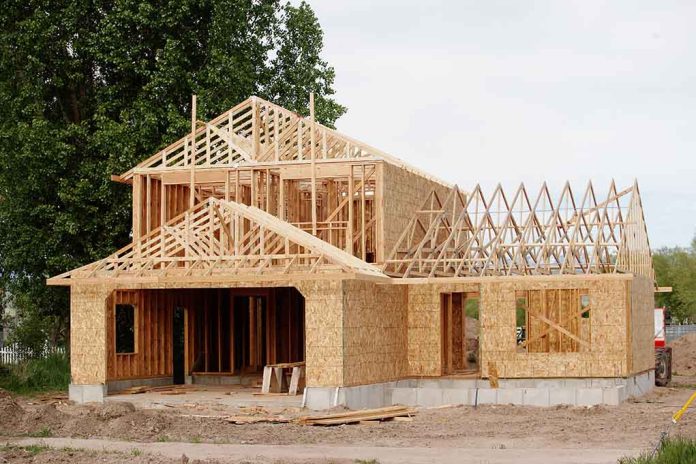
(RightWing.org) – One of the cornerstones of President Joe Biden’s agenda is reducing the carbon footprint. He wants to do this by achieving net-zero emissions. To that effect, he has already tried to overhaul the automotive industry, hoping to achieve the benchmark by 2035. That has been met with much backlash. Now, the administration has a new sector in its sights: construction. Like the automotive industry, there are certain to be impacts
A Net-Zero Building Sector?
In January, the White House released its draft national definition of what defines a building with zero operating emissions. According to the document, the purpose “is to create a standardized, consistent, measurable basis for zero emissions buildings,” and is not legally binding or at the moment, a regulatory requirement. However, it does mention that the definition “can be applied to existing buildings and new construction of non-federally owned buildings.” In other words, where people work and live.
The draft further outlines specific criteria that a building would need to meet to achieve this definition, including:
- Powered only by clean energy
- Highly energy efficient
- No on-site emissions caused by energy use
Elaborating further, in order to be powered solely by clean energy, the power must come from carbon-free sources, whether onsite or off-site. To meet the highly energy-efficient criteria, its performance must be within the top 25% of those in the market. In addition, the use of energy in new building construction must be at least 10% lower than the IECC or ASHRAE 90.1 model code. Finally, to achieve no on-site emissions, the greenhouse gas emissions of the building caused by energy use must equal zero.
While it’s not considered regulation at this point, some are worried that by establishing the definition, the regulatory moves aren’t far off.
Climate-Friendly Changes Are Not Budget-Friendly
Over the past few years, climate advocates have worked hard to lobby for specific changes related to buildings. Home builders associations are fighting back against the measures, saying that implementing the climate-friendly building codes — which would call for super airtight windows, thicker insulation, and upgraded wiring to support electrical appliances — would put the cost of the homes out of the reach of those on a budget.
In fact, in North Carolina, Ron Jackson, who works as a home builder, said that implementing such codes would make it impossible for blue-collar workers, such as police officers, nurses, and teachers to afford the homes he specializes in. Adding in these additional measures would add $20,000 to the cost of a home, and for some, that’s simply not sustainable.
Copyright 2024, RightWing.org






















